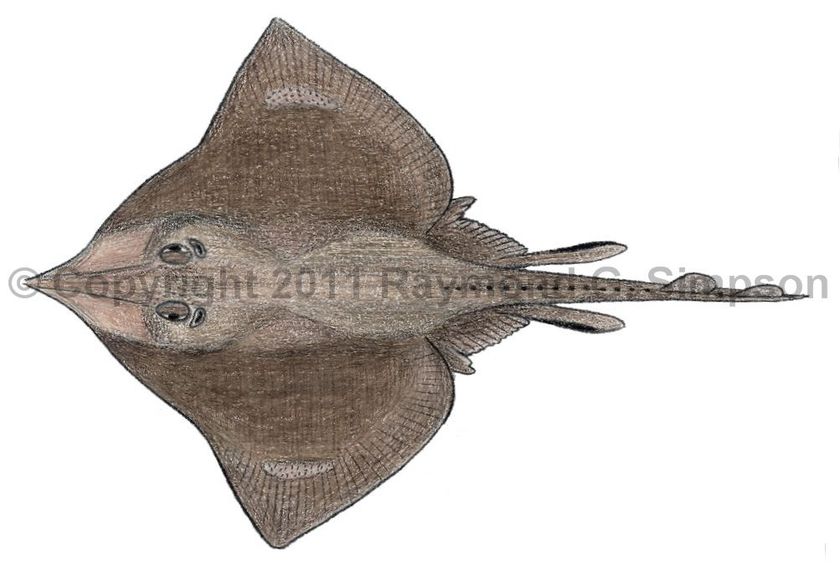
Common Name
Roughskin Skate
Year Described
Krefft & Stehmann, 1975
Identification
Disk spade-shaped with a concave anterior margin. Snout very long. Pectoral fins angular. Tail about 50% of TL, and has low skin folds on both sides. There are two dorsal fins, separated from each other by a distance less than one half of first dorsal base. The caudal fin consists of a moderately developed lobe.
Body is rough above, with dermal denticles covering body. There are several orbital thorns but no spiracular thorns. Nuchal thorns absent. Scapular thorns absent. No thorns on midline of body anterior to pelvic base. Tail with 24-43 median row of thorns and 1-2 lateral thorn row(s) on each side with 4-30 thorns each. Up to four thorns (0-4) present between the dorsal fins. Ventral surface rough like dorsum, except for belly. Juveniles (<40cm) are smooth overall except for snout and head region. Upper jaw teeth number 36-44.
Several osteological and clasper differences between D. trachyderma and D. mennii described in Moreira et al., 2011.
Color
Dark brown to dark gray with no markings above. Ventral surface dark, but lighter than dorsum. Ampullar pores darkened.
Size
Males can reach up to 93cm disk width and females reach 125cm disk width.
Habitat
Demersal from 158-314m.
Range
Southwestern Atlantic: Uruguay to Tierra del Fuego, Chile, including the Falklands Is. Also in the SE Pacific.
References
Bizikov, V., Arkhipkin A.I., Laptikhovsky VV., Pompert J.H.W. 2004. Identification guide and biology of the Falkland skates. Stanley, Falkland Islands: Fisheries Department, Falkland Island Government. 11 p.
Díaz de Astarloa, J.M., E. Mabragaña, R. Hanner and D.E. Figueroa. 2008. Morphological and molecular evidence for a new species of longnose skate (Rajiformes: Rajidae: Dipturus) from Argentinean waters based on DNA barcoding. Zootaxa 1921:35-46.
Moreira, R.A., U.L. Gomes, & M.R. de Carvalho. 2011. Morphological description of Dipturus mennii (Chondrichthyes: Elasmobranchii: Rajidae) and its differentiation from Dipturus trachyderma. Zoologia 28 (1): 97–111.
Other Notes
The only Dipturus in the SW Atlantic with extensive dermal denticles outside the head and branchial region. Records of D. trachyderma from Brazil are most likely D. mennii.